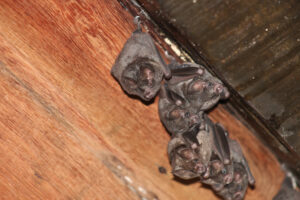How to Get Bats Out of My Home?
Bats are fascinating creatures that play a crucial role in our ecosystem by helping control insect populations. However, when they reside in your home, they can become a nuisance and potentially pose health risks. If you’re wondering how to get bats out of your home safely and effectively, this comprehensive guide will provide you with step-by-step instructions.

Identify the Problem
The first step in dealing with a bat infestation is to confirm that you indeed have bats in your home. Common signs of a bat presence include:
- Seeing bats entering or exiting your home at dusk or dawn.
- Hearing squeaking or scratching sounds coming from walls or ceilings.
- Discovering bat droppings, known as guano, in and around your home.
If you’re unsure, it’s best to consult with a wildlife professional who can perform a thorough inspection.
Locate Entry and Exit Points
Once you’ve confirmed the presence of bats, identify their entry and exit points. Bats can fit through small openings, so look for gaps in the exterior of your home, such as around vents, chimneys, and eaves.
Observe Local Laws and Regulations
Before taking any action, research your local laws and regulations regarding bats. In many places, bats are protected species, and it may be illegal to harm or disturb them without proper permits. Contact your local wildlife agency or conservation office to ensure you’re in compliance.
Choose the Right Time for Exclusion
The best time to evict bats from your home is during the late summer or early fall when young bats are old enough to fly but haven’t yet hibernated. Avoid exclusion during the spring or maternity season when mothers may have pups that cannot fly.
Exclusion Methods
There are humane and effective methods for excluding bats from your home:
-
Bat-Proof Your Home:
- Seal all entry and exit points except one, which will be used for the bats to leave.
- Install one-way bat exclusion devices (bat valves or tubes) at the remaining exit point. These devices allow bats to leave but prevent them from re-entering.
-
Wait for Bats to Leave:
Leave the exclusion device in place for several nights to ensure all bats have left the building. Check for bat activity in the evenings to confirm.
-
Seal the Final Entry Point:
Once you’re sure all bats have left, seal the final entry point. Use materials like caulk, weather stripping, or mesh screens to prevent re-entry.
Clean and Sanitize Affected Areas
Bats can leave behind guano and urine that may carry diseases like histoplasmosis. After the bats are gone, it’s essential to clean and sanitize the affected areas. Wear appropriate protective gear, including gloves and a respirator, and follow these steps:
- Remove and dispose of guano and contaminated materials.
- Disinfect affected surfaces with an enzyme-based cleaner or a mixture of water and bleach.
- Repair any damage caused by the bats, such as insulation or drywall.
Prevent Future Infestations
To prevent future bat infestations:
- Regularly inspect your home for potential entry points, and promptly repair any openings.
- Install bat houses in your yard to provide alternative roosting options for bats.
- Trim trees and bushes near your home to minimize access points.
Seek Professional Help
If you’re unsure how to proceed or if the infestation is extensive, it’s wise to consult with a professional wildlife removal expert. They have the knowledge and experience to safely and legally handle bat infestations.
Expert Bat Removal from Bay Area Wildlife
Getting bats out of your home requires careful planning and adherence to local regulations. Luckily, Bay Area Wildlife has been helping home and business owners safely remove wildlife from their properties for years and can remove pecky bats from your property. Contact us now for immediate assistance.

 302.500.0181
302.500.0181  410.829.6368
410.829.6368